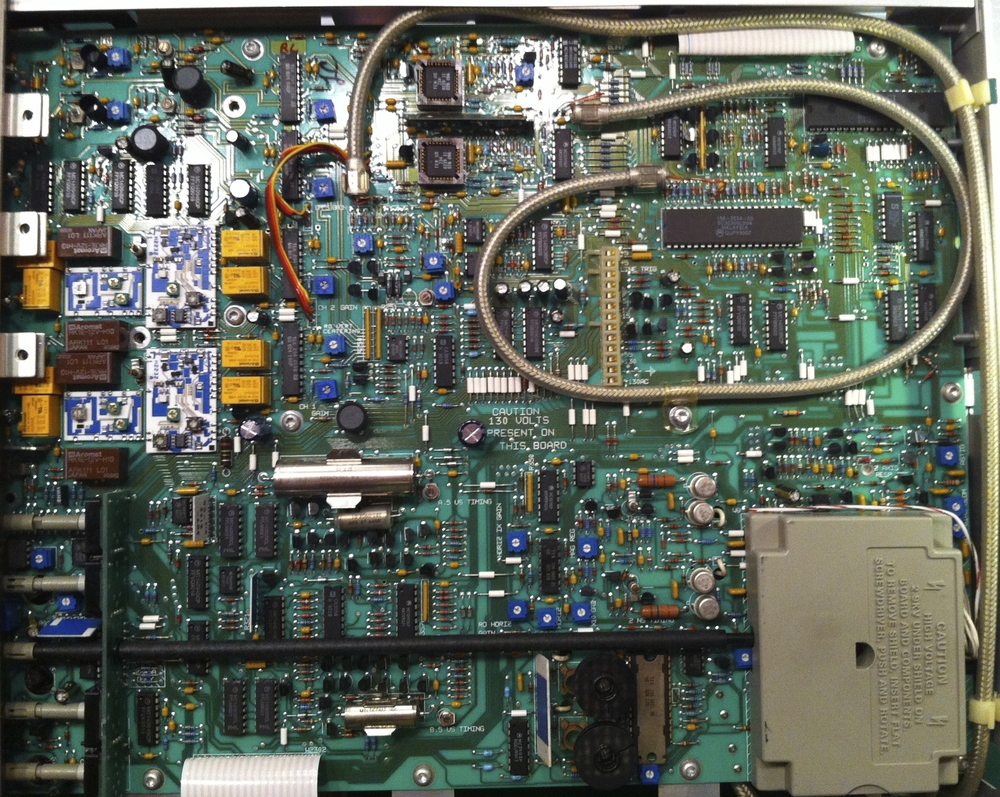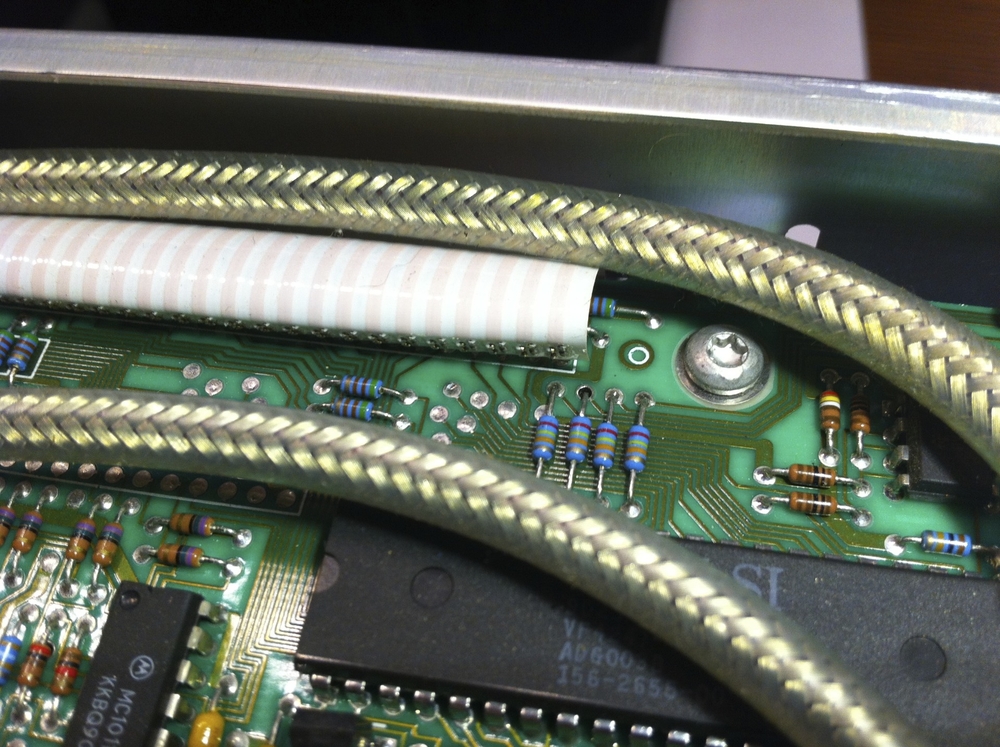Fixing a Tektronix 2246A oscilloscope
2012-01-26
I bought an (obviously used) Tektronix 2246A oscilloscope at an auction site. It wasn't expensive, it looked fairly good and the seller was nice and provided start-up warranty.
After getting the scope it turned out that channel 3 was dead. Channels 1, 2 and 4 worked fine, but channel 3 would just draw a flat line, no signals registered.
I negotiated a discount deal with the seller and set on to repair the thing. Thank heavens for the extremely detailed service manuals! The manual for the 2246A Mod A wasn't difficult to find. I opened the enclosure and after performing the standard self-test procedures suggested by the manual started following the channel 3 signal path with an old scope I had.

I quickly discovered that the input signal was fine right until it entered the preamp IC (U230), a custom Tektronix chip. The inputs were fine, the output was flat. I was rather disappointed, as a failed IC would mean I'd need to find a replacement, which would be neither easy nor inexpensive.
But -- I then supplied the same signal to channel 4 and started comparing the two paths. According to the schematics, they should be identical. When I got to the preamp IC for channel 4, I started comparing the preamp ICs for both channels pin by pin. And… it turned out that the enable signal for U230 wasn't there!

The enable signals are generated in the U600 ("slow logic ic") chip, at the back of the main board. This is where things got weird, as the service manual I had diverged from the board I had in front of me. Not sure why, but clearly my main board was very different, with U600 and U602 placed in completely different locations and rotated. But, with some detective work I managed to figure out which chip is the U600 "slow logic ic". And the enable signal for channel 3 preamp was clearly there on the chip's pin. So I started following the signal and bingo! One of the resistors on the CH 3 EN signal path wasn't soldered at all!
Now, I'm not sure how this is possible -- would a cold solder joint produce such an effect? But clearly the connection was broken. Fortunately, this was easily fixable with a soldering iron, and a couple of minutes later I had my scope with all 4 channels working just fine.
Given that I paid about $200 for the scope, I'm quite happy with the end result.
[Posts like this one are written for search engines: one day someone might be looking for repair tips and find this page. I hope it helps someone.]
Hey, im in quite a trouble myself. I got this 2246 which wont start. Im told that the guy who owned it before me put more than 400Vpk into it and hell broke loose. Now it blows the fuse on the back if I try turning the scope on.
Im wondering, did you find any schematics of the device? Cause im not finding any :(
Conratulations on geting your one fixed :)
With regards,
Unnar
Hey Unnar — yes, I did find a service manual, which includes schematics. They were not for my exact version of the scope, but were enough to get me going.
Try googling for "Tektronix 2246A service manual pdf", and if you don't manage to find it, contact me privately, I'll dig it up for you.
Hi Jan,
I'm in the same situation as Unnar! :) I'm a mechanical engineer that just decided to bite the bullet and buy a used 2246 as my first personal analog scope. It is in great condition but the BNC for channel 1 is giving me some intermittent signal loss. The housing itself is quite sturdy, but if I move (any) probe around while connected, the signal disappears and won't come back until I wiggle again. I cannot find the service manual online at all aside from a place charging $90 for it.
I responded privately — let me know if you don't get the E-mail.